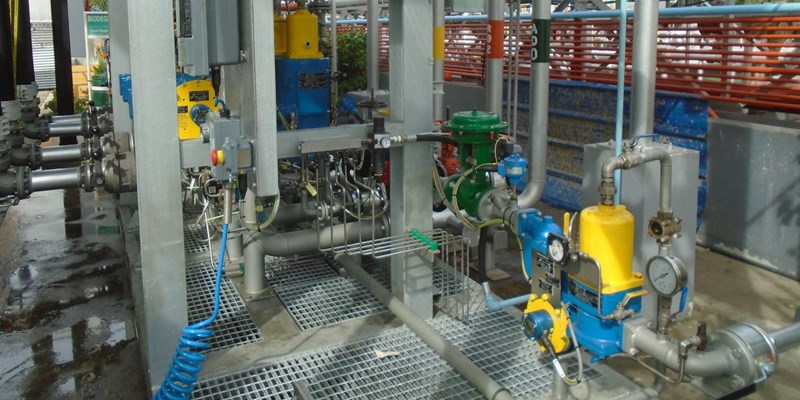Synthetic and Biofuel Blending: Advancing Sustainability in Energy Solutions

Synthetic and biofuels are emerging as a key element in the global push toward more sustainable energy systems. As environmental concerns and regulations drive the demand for cleaner fuels, synthetic and biofuel blending offers both immediate and long-term advantages.
This article explores the fundamentals of synthetic and biofuel blending, focusing on the following aspects:
- What is Synthetic and Biofuel Blending?;
- HVO as a Synthetic Fuel;
- Operational Benefits and Challenges;
- Future Perspectives in Synthetic and Biofuel Blending;
- Biofuel Blending Systems: Ensuring Efficiency and Compatibility.
What is Synthetic and Biofuel Blending?
Synthetic and biofuel blending refers to the process of combining synthetic fuels, which are artificially produced from renewable or fossil sources, or biofuels, which originate from organic materials with conventional hydrocarbons such as diesel, gasoline, or jet fuel.
This strategy enables the reduction of greenhouse gas (GHG) emissions, improves fuel efficiency, and minimizes the environmental footprint of transportation and industrial sectors.
Synthetic fuels are often produced using advanced chemical processes such as hydrogenation of biomass-derived oils. These fuels replicate the molecular structure of traditional fossil fuels, allowing for seamless integration into existing fuel distribution infrastructure and combustion engines.
HVO as a Synthetic Fuel
Hydrotreated Vegetable Oil (HVO) is a synthetic fuel derived from vegetable oils or animal fats through a hydrogenation process. This process removes oxygen molecules, resulting in a high-quality fuel with properties similar to diesel.
Unlike traditional biodiesel, HVO does not contain esters or oxygenated compounds, ensuring better stability and compatibility with modern engines.
HVO is widely used in transportation, and industrial applications due to its combustion efficiency, cold-weather performance, and extended shelf life.
As part of synthetic and biofuel blending, HVO is blended with conventional hydrocarbons, such as diesel, to enhance sustainability while maintaining high energy efficiency.
Read more about all types of fuel blending and their applications
Operational Benefits and Challenges of Synthetic and Biofuel Blending
One of the primary advantages of synthetic and biofuel blending is its ability to enhance fuel performance without requiring significant modifications to existing engine technologies.
Blended fuels improve combustion efficiency, reduce particulate emissions, and contribute to a more sustainable fuel economy.
Moreover, synthetic fuels and biofuels are designed to be drop-in replacements for conventional fuels, meaning they can be used within existing transportation and industrial infrastructure
Investment in renewable energy sources and advanced processing technologies is crucial to achieving a cost-effective transition to blended fuels.

Future Perspectives in Synthetic and Biofuel Blending
The future of synthetic and biofuel blending looks promising as technological advancements and policy frameworks continue to support the transition to sustainable energy.
Innovations in feedstock utilization are expanding synthetic fuel production sustainably.
Additionally, government incentives and carbon reduction targets are driving adoption across industries, further reinforcing the role of synthetic and biofuel blending in achieving global climate goals.
As awareness of its benefits increases, blended fuel strategies will play a transformative role in shaping a cleaner, more sustainable energy landscape.
Biofuel Blending Systems: Ensuring Efficiency and Compatibility
Biofuel Blending Systems play a crucial role in enabling the seamless integration of biofuels with conventional hydrocarbons.
These systems are designed to accurately measure, mix, and distribute blended fuels while ensuring compliance with industry standards and regulatory requirements.
By utilizing advanced metering technology, automated controls, and precision injection systems, biofuel blending solutions optimize fuel composition, enhancing performance, efficiency, and sustainability.
Modern blending systems support a wide range of biofuel concentrations, from low-level blends like B5 (5% biodiesel) and E10 (10% ethanol) to higher blends such as B20, E85, or even pure biofuels.
These solutions are widely used in fuel terminals, distribution centers, and retail fueling stations, ensuring consistent quality, stability, and compatibility with existing fuel infrastructure and engine technologies.
Synthetic and biofuel blending represents a game-changing opportunity, combining environmental responsibility with operational practicality. By embracing synthetic and biofuels as an integral part of modern energy strategies, industries can contribute to a cleaner, more sustainable future while meeting today's energy demands.
Contact us
to learn how synthetic and biofuel blending can enhance your energy strategy
Contact us for more information about our services and products
Form sent successfully
Error
